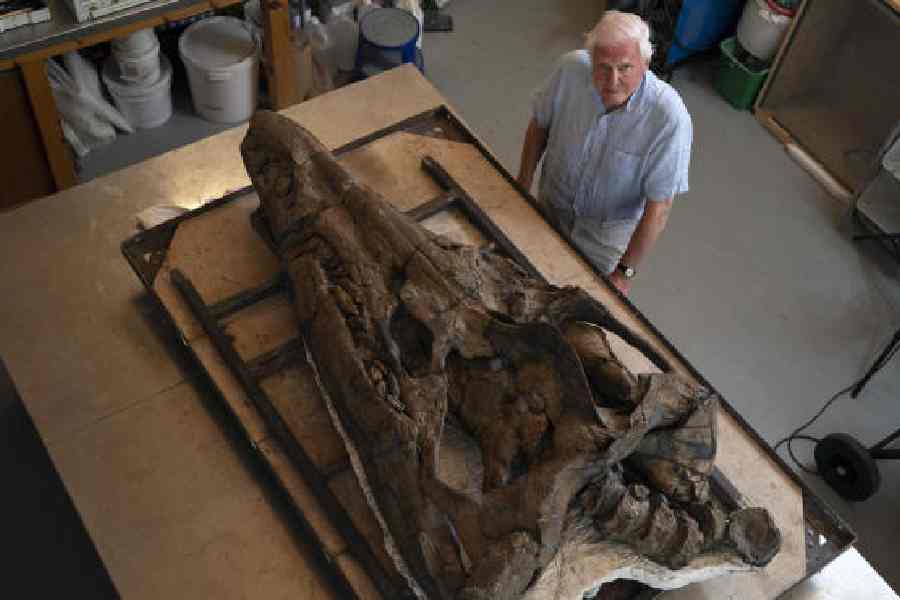In the spring of 2022, Philip Jacobs, who is an artist and fossil hunter, was walking along the Jurassic Coast in southern UK when he came across a snout.
It was about 2 feet long, complete with teeth, and appeared to have come from an ancient ocean predator known as a pliosaur. When crews returned days later with a drone, they found the snout had fallen from a cliff towering over the beach — embedded in the cliff was the rest of the skull.
The more than 6-foot-long fossil, with the skull intact and no bones missing, is the “discovery of a lifetime”, one expert said.
“There are some special features in it that we haven’t seen on the previous ones that have been discovered,” Steve Etches, a palaeontologist who has been collecting fossils for more than 40 years and was involved in the excavation, said. “And it’s the most complete. So the whole skull is there; there are no bones missing.”
Pliosaurs were the largest carnivorous reptiles that ever lived, Etches said, and reigned at the top of the food chain in the seas of the Jurassic Period. They were probably solitary hunters who preyed on plesiosaurs and ichthyosaurs, other marine reptiles, he added.
“They are rather like lions on the Serengeti,” Etches said of pliosaurs. “You get a pride of lions, but thousands of antelope and everything else. It’s the same as the Jurassic seas.”
The skull is being kept in the Etches Collection Museum of Jurassic Marine Life in Kimmeridge, around 7 miles west of the Jurassic Coast and more than 100 miles southwest of London. Etches said the museum was working to get the skull into a display case for viewing in January.
Pliosaurs lived between 200 million and 65.5 million years ago, and could grow to more than 40 feet long. With extremely powerful jaws, massive flippers and daggerlike teeth, they could quickly hunt and crush prey into bite-size pieces, said David Martill, an emeritus professor of palaeobiology at the University of Portsmouth, the UK, who was not involved in the find. “There was nothing in the ocean that could have escaped an attack,” he said.
The first pliosaur fossils were found in the 1820s along the Jurassic Coast, and further discoveries have expanded scientists’ knowledge of the creatures. But nothing has come close to the nearly intact skull, Martill said. “One, it’s enormous,” he added. “It’s also extremely well-preserved.”
The skull could offer new clues about the pliosaur, which had a nostril that would let water flow into its mouth, allowing it to smell and hunt prey. Scientists hope the skull will shed further light on this anatomy and, ultimately, the structure of the ecosystem in the Jurassic seas. More details about the skull will be seen in the documentary Attenborough and the Jurassic Sea Monster.
“We want to compare that ecosystem with other ecosystems — Cretaceous ones and even modern ones — to see if they are structured in the same way,” Martill said. The fact that some vertebrae remain attached to the skull suggests the rest of the pliosaur may be inside the cliff, waiting to be discovered, he added.
Etches is sure of it, but excavating it will not come cheap: it could cost about £2,50,000, or about $300,000, which he hopes to raise.
“We really need to extract it,” he said, acknowledging a crew of people who helped to bring the discovery to light. “And they’ve done it for the best possible reasons, for science, and so people worldwide can benefit from the information we get from it.”
NYTNS










